Q: Something is eating up my hard drive space in Windows 10. Help!
"About three weeks ago, my 500GB hard drive suddenly became extremely slow and had only 50GB left. Now, the hard drive only has 100MB left, and I can't even open the drive to use a file quickly. It looks like something is eating my hard drive space, but I don't know what it could be.
How can I find out what's taking up space on my hard drive and resolve this issue? Can anyone help? I'm using Windows 10."
Your hard drive may get full suddenly without a specific reason. If the hard drive is a system disk and is nearly full, Windows will be affected and slow down. If you are experiencing disk space being used up, use the free disk space analyzer to figure out what's taking up space on your hard drive, address the problem, and free up your disk space.
How to See What Is Taking Up Space on Hard Drive (C Disk)
You can use professional tools to analyze disk space on Windows or use Windows built-in tools. There are two steps you can take to find out what is taking up space on your hard drive:
Step 1. Show hidden files on the hard drive
We have provided a guide with three methods to display hidden files on the hard drive. Refer to this page for a guide: How to Show Hidden Files on computer hard drive.
Step 2. Analyze the hard drive and find what's eating up hard drive space
Here, we'll use Windows 10 as an example to show you how to see what's taking up space on the hard drive. This method can also be applied to Windows 8.1/8/7:
1. Right-click on the Windows icon and select "Settings".
2. Click "System" and "Storage" on the left-side panel.
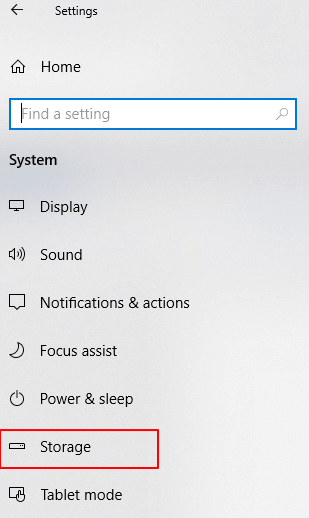
3. In the Storage window, you'll get a view of the space usage situations on all your hard drive partitions, as shown in the image below:
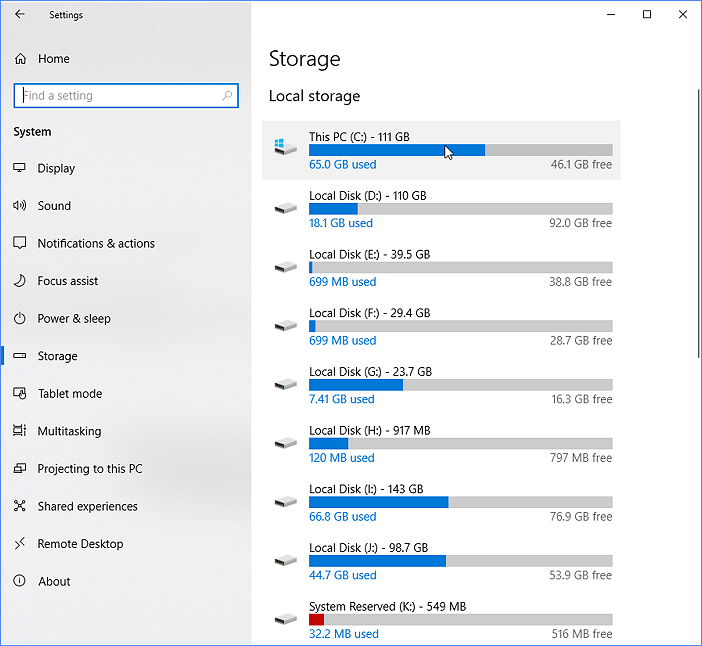
4. Then click on a nearly full hard drive partition. You'll be able to see what's taking up the most space on your PC, including apps and features taking up storage.
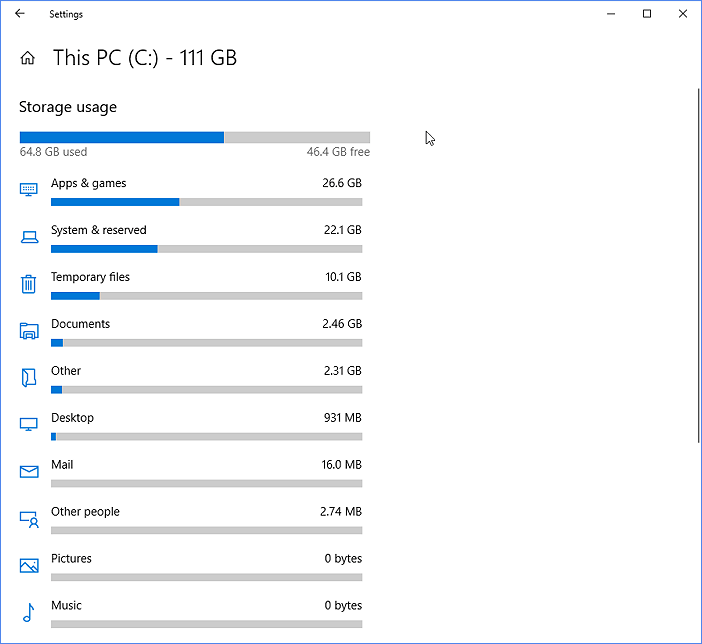
Now that you know what apps and features are taking up storage on your PC, you can manually clean up your hard drive by removing temporary files, useless apps, etc.
Click each hard drive partition and figure out what's taking up space. Click each category and remove useless apps, files, etc.
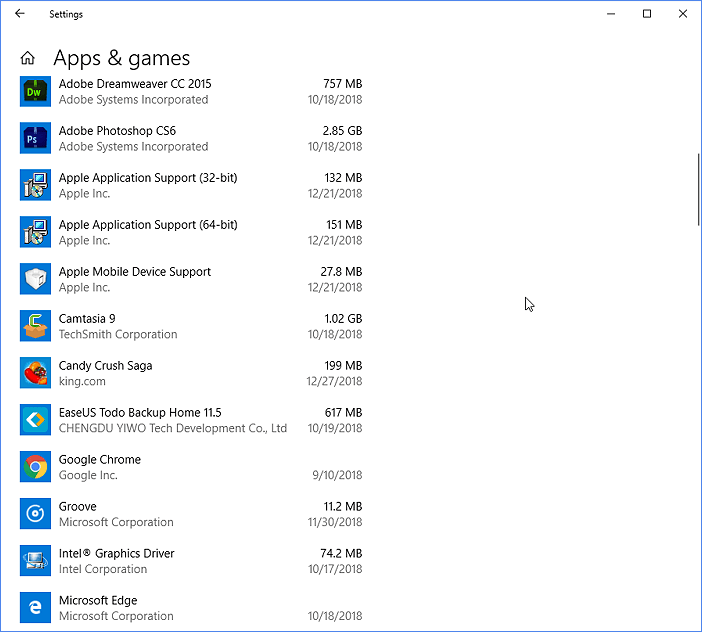
If you don't like to remove files manually, how do you thoroughly and automatically free up disk space and make the computer fast? Read on, and you'll learn all the practical methods to free up disk and speed up Windows 10. Here is a related article you can read and check about finding out what is taking up space on hard drive:
What Is Taking Up Space on My SSD
Utilize this 2023 guideline to find out what uses up space on your SSD and effectively optimize your storage.
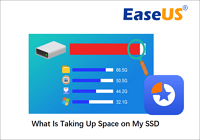
7 Effective Ways to Free Up Disk Space on C Drive
After checking out what is taking the most space on your hard drive in Windows 7, Windows 8, or Windows 10, you need to try some solutions to free up disk space on Windows 8 or 10. You can follow the approaches provided to free up space for important files and programs and improve the computer's performance.
- Way 1. Remove Junk Files/Useless Large Files
- Way 2. Run Disk Cleanup to Clean Temporary Files
- Way 3. Uninstall Unused Bloatware Software
- Way 4. Store Files on Another Hard Drive or the Cloud
- Way 5. Transfer Programs, Apps, and Games to an External Hard Drive
- Way 6. Disable Hibernate
- Way 7. Upgrade to a Larger HDD/SSD
Way 1. Remove Junk Files/Useless Large Files
If you've found that many temporary or useless large files occupy the hard drive space, EaseUS Partition Master is an ideal tool. It's a free and light program that solves insufficient space problems on hard drives, USBs, and SD cards in Windows 10/8/7.
It also supports cleaning up all hard drive partitions with its System Optimize Tool by cleaning up junk and large files. Install it on your PC now to quickly clear up space on your hard drive and improve the computer's performance.
Step 1. Download and install EaseUS Partition Master Suite.
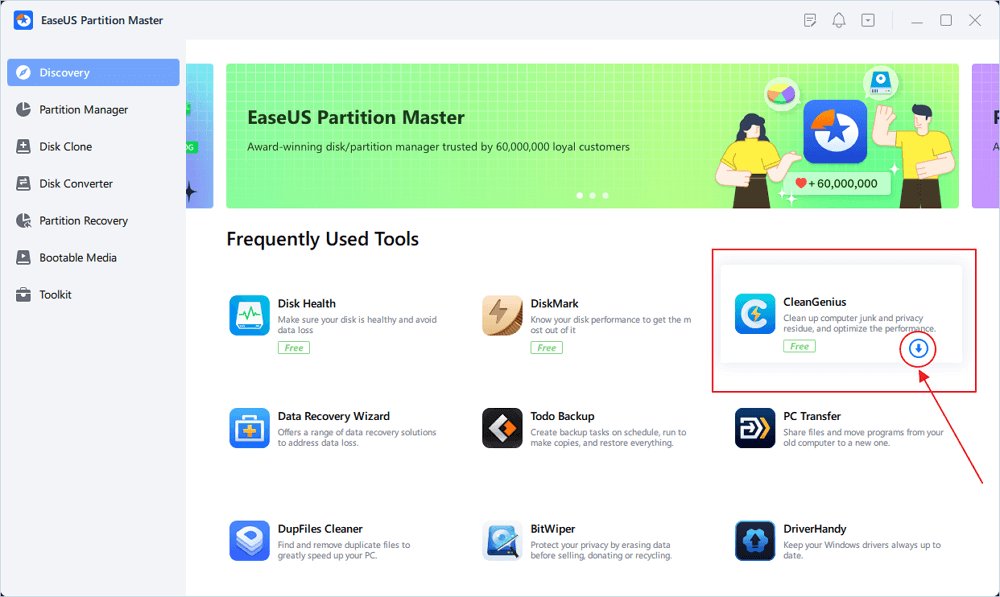
Step 2. Click PC Cleaner and install EaseUS CleanGinus. Then, click "Cleanup" and click "Scan" to start cleaning up the system and make your PC as good as new.
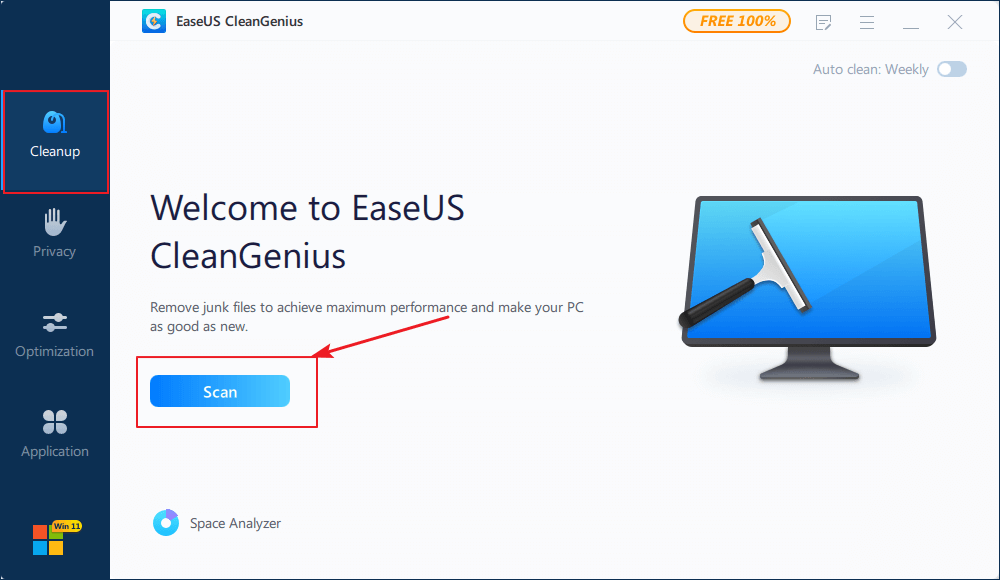
Step 3. The software will scanning all over your computer to find idle data files that take a huge amount of disk space, you can select useless large files, system junk files and Windows invalid entries and click "Clean" to start system cleanup process.
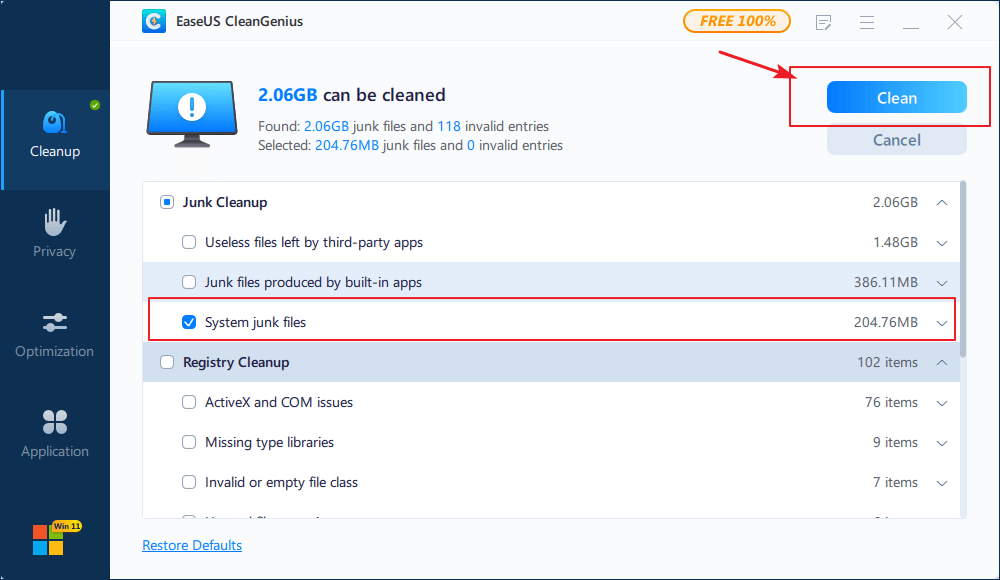
Step 4. When the scan is complete, click "Done" to finish cleaning system junk files.
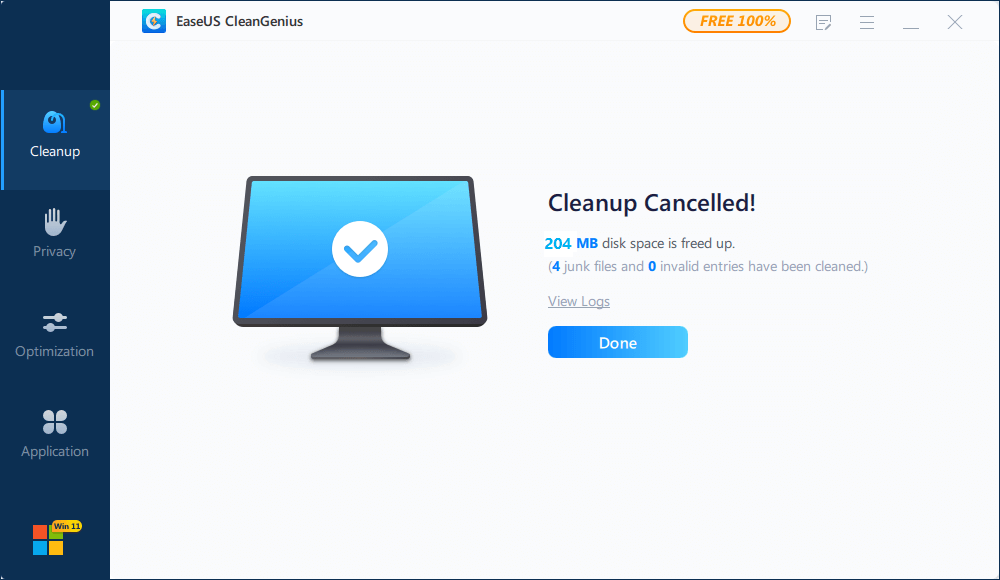
You may also choose "Clean Large Files" to remove useless large files, which is also useful to clear out a lot of free space.
Way 2. Run Disk Cleanup to Clean Temporary Files
Unlike disk defragmentation, which rearranges the files, Disk Cleanup works to remove temporary files and other unimportant data on the hard drive and helps to reclaim your disk space.
Step 1. Open This PC, right-click on your system drive and choose "Properties."
Step 2. Click "Disk Cleanup" under the "General" tab, and the utility will start scanning your drive and calculating how much space you can free.
Step 3. When done, choose "Clean up system files" in the window to let the tool scan your disk again.
Step 4. After the scan completes, click "OK" in the new window. Then you will see a notification asking you, "Are you sure you want to delete these files permanently?". Click Delete Files. Since these operations remove unnecessary files in your system, you don't need to worry about losing important files.
If disk cleanup is not working in Windows 10, learn how to fix it here.
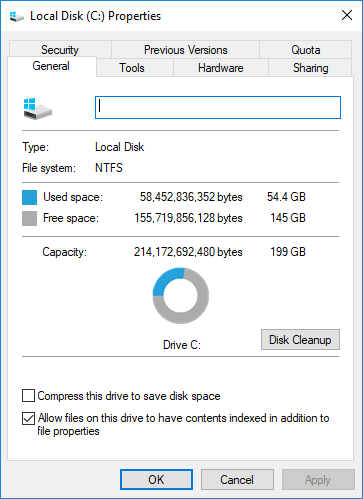
Way 3. Uninstall Unused Bloatware Software
Many PCs come with multiple pre-installed programs you don't want or need, which are large in size and cause your computer to have low disk space. You can uninstall the bloatware to free up space on your hard drive and make your Windows 10 run faster.
Right-click the Start menu, choose "Control Panel" > "Programs" > click "Uninstall a program". Select the programs you no longer need and click "Uninstall" at the top of the list.
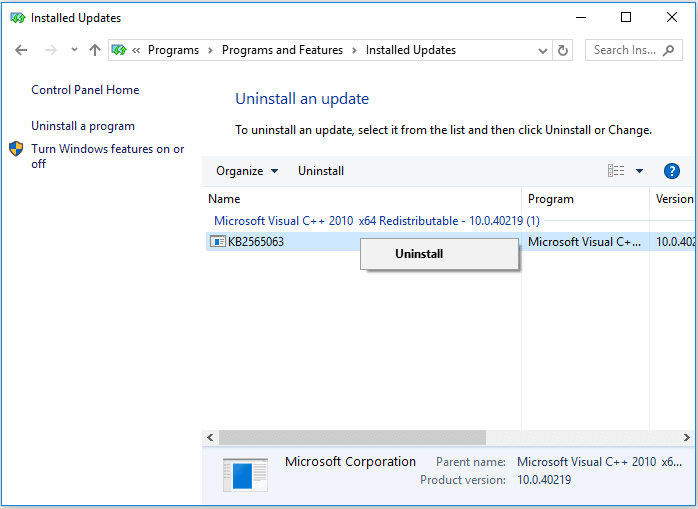
Read Also:
7 Ways to Fix 99% Disk Usage on Windows
Discover effective solutions to resolve 99% of disk usage issues on Windows. Follow seven methods to optimize your system's performance efficiently.
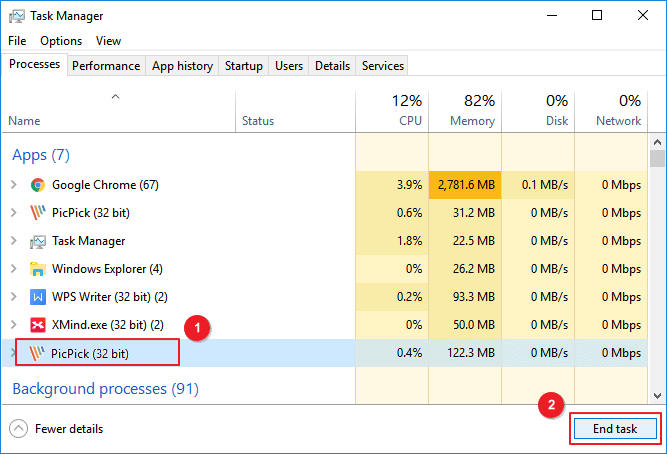
Way 4. Free Up Space by Storing Files on Another Hard Drive or the Cloud
If you have some important large files that are occupying big space on a hard drive, you can try one of the tips below:
Tip 1. Add a new disk to your PC, and move and store files to the new disk.
Tip 2. Store files on an external storage device.
Tip 3. Store files in a cloud account, such as OneDrive.
Tip 4. Back up big files into an image with a compressed format, saving almost half a space on your disk.
Don't forget to share this "What is taking up space on my c drive" post with other users:
Way 5. Transfer Programs, Apps, and Games to an External Hard Drive
If your internal hard drive on Windows is full of installed programs, applications, and games, you can change the install location of these programs. You can free up space on your hard drive by moving programs to an external hard drive and ensuring you can run the program on any other computer. How to do that? Use EaseUS Todo PCTrans to accomplish app migration with a few clicks.
Step 1. Launch EaseUS Todo PCTrans and select transfer mode
On the main screen of EaseUS Todo PCTrans, go to "Local Migration" section and click "Start" to continue.
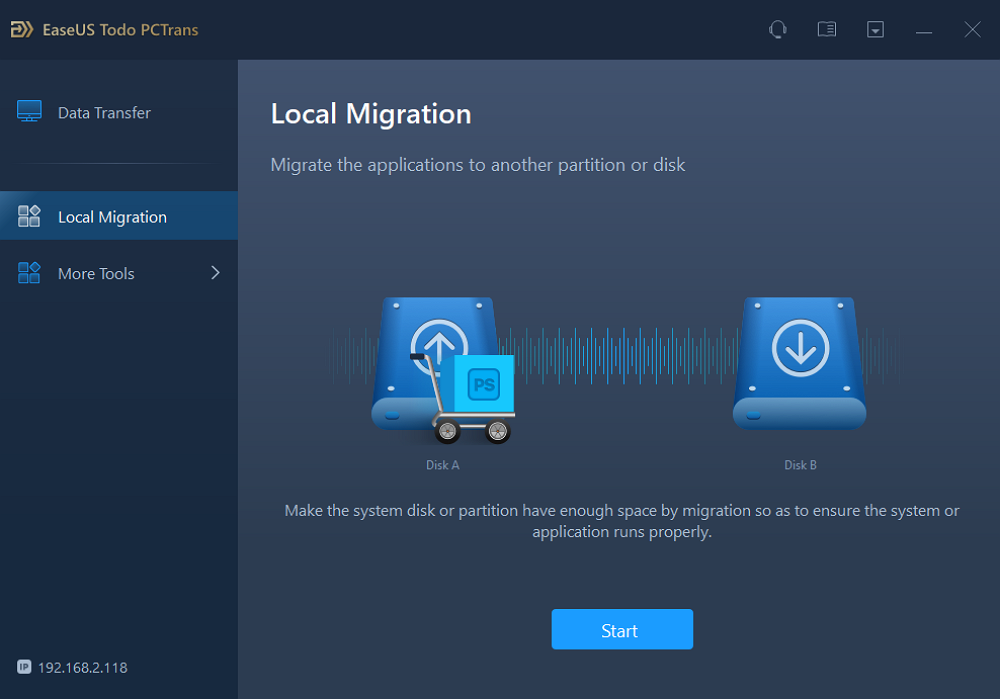
Step 2. Select apps and another drive to transfer
1. Select the source partition and tick applications, programs and software (marked as "Yes") that you'd like to migrate.
2. Click triangle icon to select another drive or disk as your target device and click "Transfer" to start the migration.
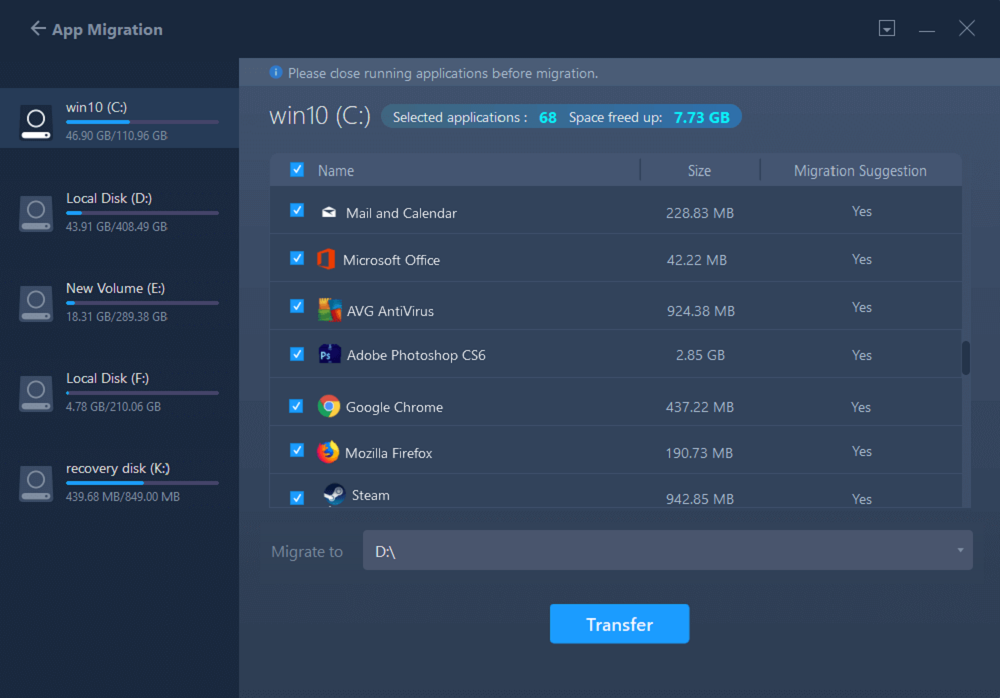
Step 3. Finish the migration process
When the transferring process finishes, click "OK" to complete.
You can restart your PC to keep all the changes, and you should be able to run your migrated apps on the other drive again.
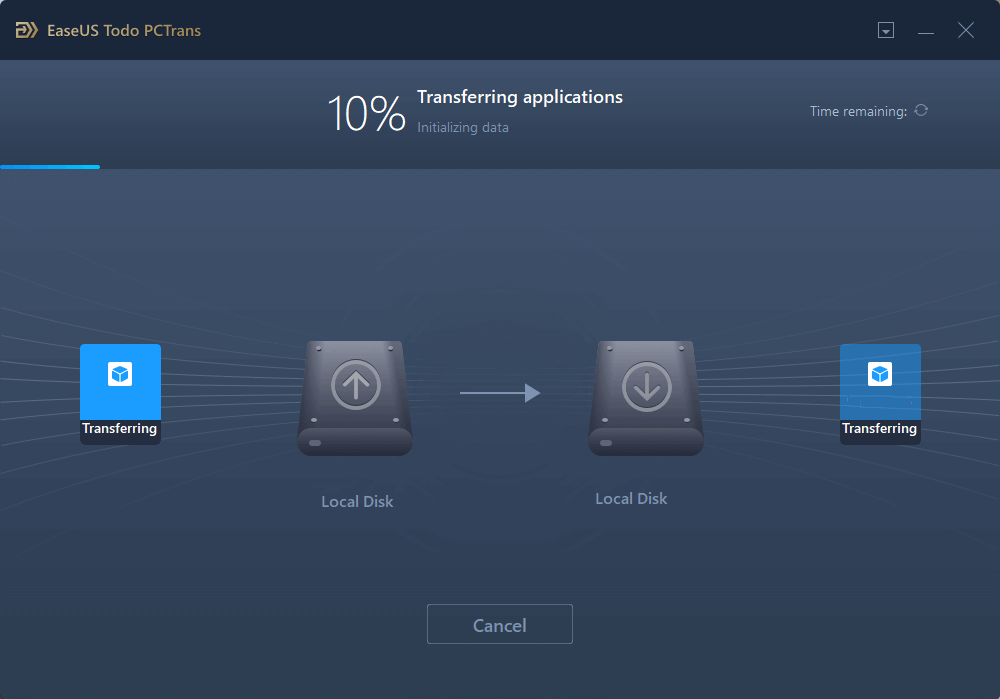
Way 6. Disable Hibernate
When you hibernate your system, it saves the contents of its RAM to your hard drive. This allows it to save its system state without any power usage – the next time you boot your computer, you'll be back where you left off. Windows saves the contents of your RAM in the C:\hiberfil.sys file. To save hard drive space, you can disable Hibernate entirely, which removes the file.
If you use this feature and it's useful for you, don't turn it off. It's up to you.
Step 1. Click on Start, open Control Panel, then click on "Power Options." On the left side, click "Change when the computer sleeps."
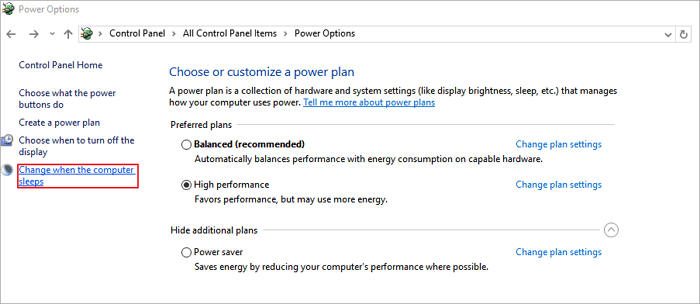
Step 2. Now click on Change advanced power settings. In the Advanced Power Options window, expand the "Sleep." Then expand "Hibernate after" and change the minutes to 0 to turn it off.
Step 3. Or you can specify the amount of minutes you want to pass before it goes into hibernation. Click "Apply" and "OK," then close out of the remaining screens.

Way 7. Upgrade to a Larger HDD/SSD
If none of the above options will free up enough free space on your hard drive on Windows 10 or 7, the most thorough solution is replacing the old hard drive with a larger new hard drive. Cloning is the best way to replace a hard disk drive because it can migrate your old disk to the new one without any data loss, and it's very convenient.
EaseUS Partition Master, an ultimate partition management tool, enables you to clone an entire disk to another even if the destination partition is smaller than the source, which means you can clone a larger HDD to a smaller HDD.
Download this easy-to-use disk management program to clone a hard drive to an HDD or SSD with simple guides.
Step 1. Select the source disk.
- Click the "Clone" from the left menu. Select the "Clone OS Disk" or "Clone Data Disk" and click "Next".
- Choose the source disk and click "Next".
Step 2. Select the target disk.
- Choose the wanted HDD/SSD as your destination and click "Next" to continue.
- Read Warning message and confirm "Yes" button.
Step 3. View the disk layout and edit the target disk partition size.
Then click "Continue" when the program warns it will wipe out all data on the target disk. (If you have valuable data on the target disk, back up it in advance.)
You can select "Autofit the disk", "Clone as the source" or "Edit disk layout" to customize your disk layout. (Select the last one if you want to leave more space for C drive.)
Step 4. Click "Start" to start the disk cloning process.
Final Verdict
Now you've learned how to see what is taking up space on my C drive and how to free up space on the hard drive with seven feasible fixes. However, there is no one-for-all solution. High disk space usage frequently occurs, even if you've upgraded to a larger hard drive. So remember to use these disk space cleanup methods to clear your disk regularly. EaseUS Partition Master is a comprehensive disk management tool that effectively aids users in checking what is taking up space on their hard drives and freeing up storage.
FAQs of What Is Taking Up Space on My Hard Drive
Understanding what occupies space on your hard drive is essential for maintaining optimal performance. Here are some common questions and answers regarding this issue:
1. What commonly takes up space on my hard drive?
Several factors can contribute to disk space consumption, including:
- Installed Programs: Applications and software can occupy significant space.
- Temporary Files: These files are created by the system and applications but can accumulate over time.
- Recycle Bin: Deleted files remain in the Recycle Bin until they are emptied, consuming space.
- Cached Files and Browsing History: Web browsers store data to speed up loading times, which can take up space.
- Large Media Files: Videos, music, and images in your Downloads, Pictures, or other folders can consume substantial space.
2. How can I free up space on my hard drive?
There are several effective methods to reclaim disk space:
- Disk Cleanup Tool: This built-in Windows tool removes temporary files, system files, and other unnecessary data.
- Uninstall Unused Programs: Go through your installed applications and remove those you no longer use.
- Empty the Recycle Bin: Regularly clearing the Recycle Bin can free up significant space.
- Delete Temporary and Cached Files: Removing these files manually or through cleanup tools can help recover space.
- Move Files to External Storage: Consider transferring large files, such as videos and photos, to an external hard drive or cloud storage.
3. Should I optimize my hard drive?
Yes, optimizing your hard drive can enhance performance. Regular maintenance, such as defragmentation (for HDDs) and using cleanup tools, ensures efficient storage management and can improve load times and overall system responsiveness. By understanding what takes up space and how to manage it, users can maintain their systems more effectively and ensure smooth operation.
Was This Page Helpful?
Updated by Tracy King
Tracy became a member of the EaseUS content team in 2013. Being a technical writer for over 10 years, she is enthusiastic about sharing tips to assist readers in resolving complex issues in disk management, file transfer, PC & Mac performance optimization, etc., like an expert.
Related Articles
-
Fix WD External Hard Drive Not Showing Up/Recognized Error [2025 Tutorial]
![author icon]() Tracy King/2025-07-04
Tracy King/2025-07-04 -
[6 Quick Fixed] Computer Turns On But No Signal to Monitor
![author icon]() Larissa/2025-07-04
Larissa/2025-07-04 -
Solved: How to Turn on NFC on iPhone
![author icon]() Daisy/2025-08-18
Daisy/2025-08-18 -
How to Fix Outlook Rules Not Working [8 Ways Included]
![author icon]() Jerry/2025-07-04
Jerry/2025-07-04
EaseUS Data Recovery Services
EaseUS data recovery experts have uneaqualed expertise to repair disks/systems and salvage data from all devices like RAID, HDD, SSD, USB, etc.